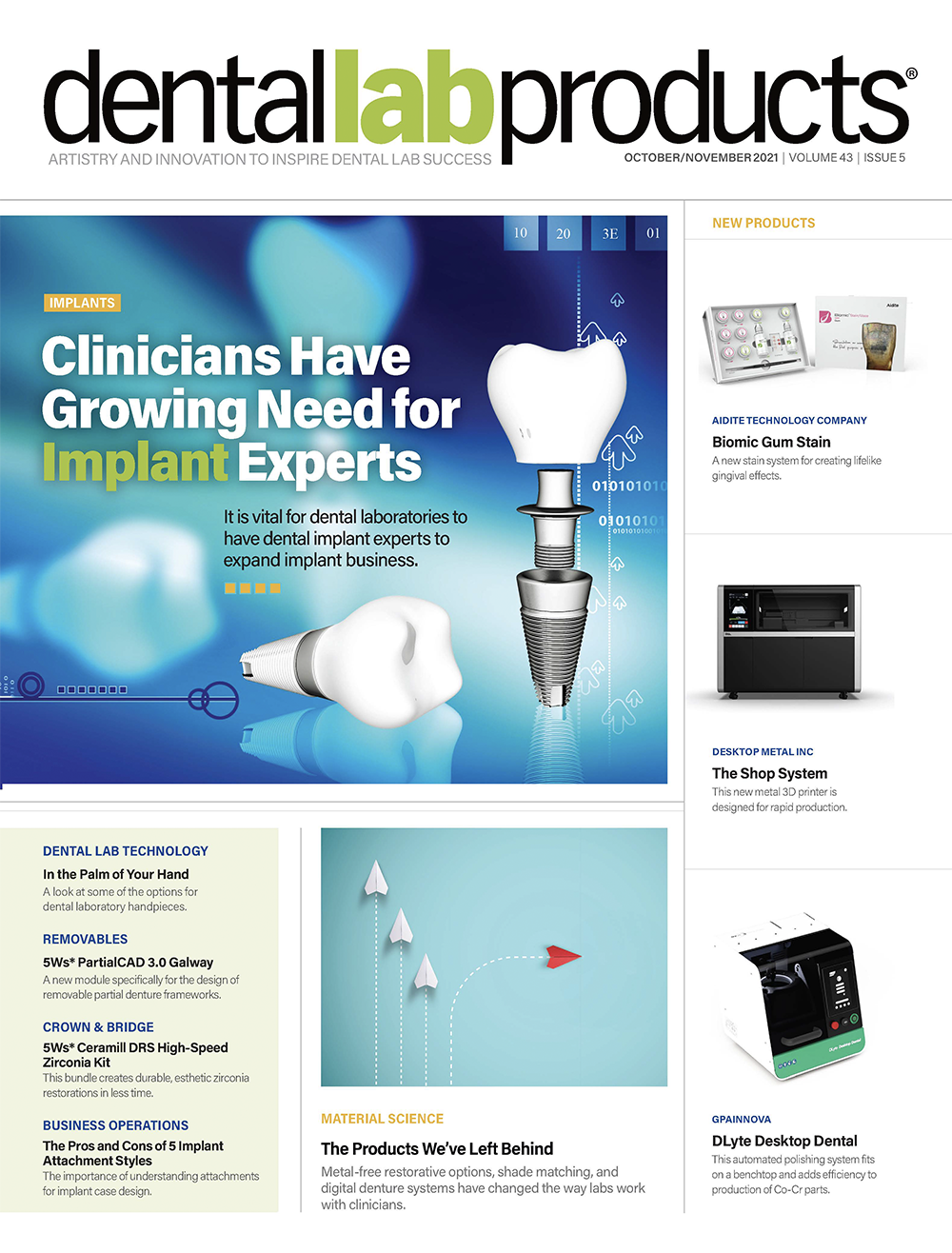Alloy to Zirconia … the Products We Left Behind!
To accurately describe the product evolution in metal free restorations, it is important to not only look at where the industry is today, but more so how it got there. To determine where this evolution is going, it is important to learn from both the failures and successes of the past!
With the arrival of the 21st century, the dental industry experienced a definite shift away from alloy supported restorative options and towards alloy free solutions. The first true contender in this arena was a high purity alumina framework digitally designed by Nobel Procera® and layered with a low fusing ceramic overlay material. This material was revolutionary for its time, offering high strength and natural esthetics throughout the value and chroma ranges. Unfortunately, the fabrication techniques were arduous and did not support a consistent marginal fit. Subsequently, the market quickly started looking for better solutions. Around the time alumina started falling out of favor, 3M® launched a product called LAVA® zirconia. Most dental technicians were excited about the accurate and reproducible marginal fit, but they soon realized that esthetics were extremely hard to control, especially in lower value applications.
Ultimately, a product developed by Ivoclar Vivadent® ended up being one of the biggest gamechangers of the 21st century and is still seen as one of the most recognized names in the industry. During this metal free evolution, the first rendering of this material was named Empress ERIS®, strangely enough sharing a name with the Greek mythological god of chaos! Unfortunately, this product held true to the name and had some significant technical challenges. The revised product was extremely successful and eventually became one of the most used and prescribed esthetic materials on the market. Ultimately, this product consisted of a lithium disilicate sub-structure layered with a nano-fluorapatite ceramic overlay. Today, this product needs no introduction and is still marketed by Ivoclar Vivadent under the very popular brand name IPS e.max®.
In the late 2000’s the industry experienced a severe shortage in qualified technicians. This shortage has become more dire and seems to be the new normal. Early advancements in dental materials were driven mostly by better esthetics and strength, but this shortage in labor created a third prerequisite: more efficient processing techniques.
As talented hands became harder to find, dental laboratories were forced to adapt to this new environment by finding solutions requiring less hand processing.
Zirconia, with its complete digital workflow, became the next logical material of choice. Unfortunately, early-stage 3Y zirconia products were seen as a substitute for alloy and simply could never compete with the esthetics of layered or monolithic lithium disilicates options. It was not until the launch of 5Y zirconias that the material started seeing traction amongst clinicians and laboratory technicians.
Today, the shift to monolithic zirconia solutions is complete. The latest advancements in zirconia production are now combining strength and esthetics. Modern day high strength high translucent zirconias like ArgenZ HT+ and multilayer options like CERCON® xtML are now able to compete with the lithium disilicate solutions of yesteryear.
These new world materials are not only extremely strong and chip resistant, but with a monolithic structure these materials hold up exceptionally well under function. The material applications are broad and can be used in very demanding single unit, multiple unit bridge and implant supported applications.
Completing the multitude of advantages is its very efficient digital workflow. This allows labs to reduce the need for arduous and expensive hand processing while delivering world class esthetics.
Ultimately, zirconia has eradicated the need for alloy support structures, pressing techniques and most important of all, the need for layering ceramics.
Zirconia has arguably influenced the dental landscape more than any other material before it, but with additive technology evolving at an exponential rate, a new uncharted world of discovery seems to be just around the corner!



